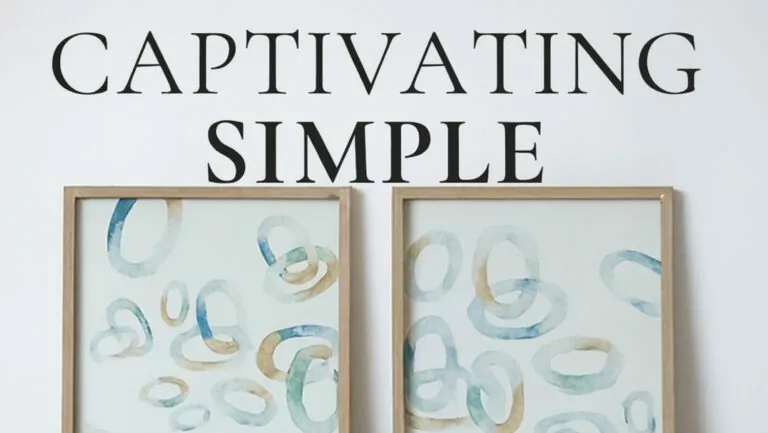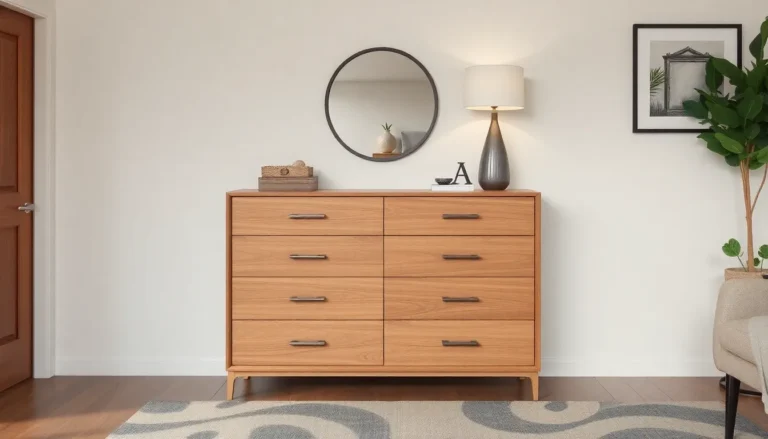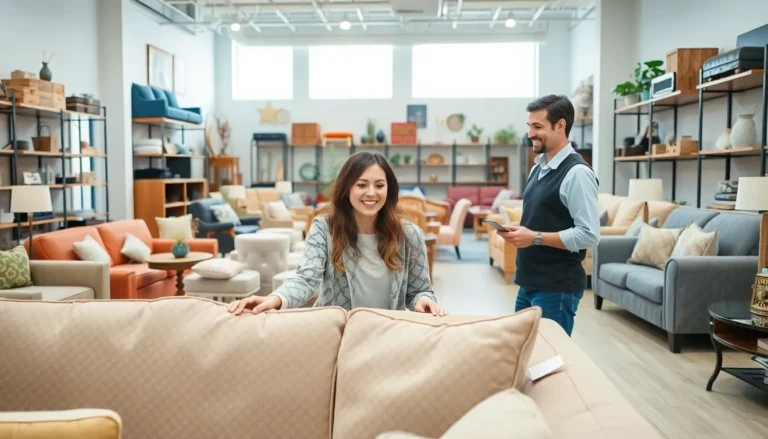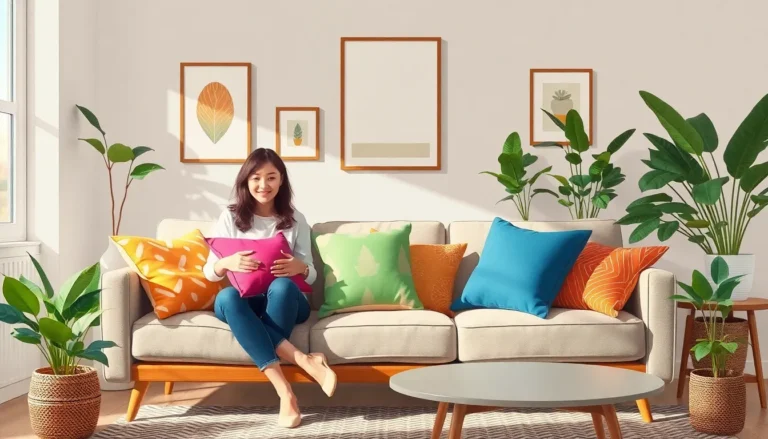Table of Contents
ToggleWardrobes aren’t just furniture; they’re the unsung heroes of our daily lives. Imagine a world without them—clothes strewn everywhere, shoes hiding in dark corners, and that elusive favorite sweater lost to the abyss. A well-designed wardrobe transforms chaos into order, making mornings smoother and style choices easier.
But let’s face it, choosing the right wardrobe can feel like finding a needle in a haystack. With endless styles, sizes, and functionalities, it’s easy to get overwhelmed. Fear not! This guide will help navigate the wardrobe wonderland, ensuring you find the perfect fit for your space and style. After all, who wouldn’t want a wardrobe that not only holds their clothes but also sparks joy every time they open the doors? Let’s dive in and discover how to elevate your wardrobe game to new heights.
Types Of Wardrobes
Various types of wardrobes cater to diverse preferences and needs. Understanding these options helps in selecting the ideal wardrobe.
Built-In Wardrobes
Built-in wardrobes maximize space by custom-fitting into walls or corners. They often integrate seamlessly with the room’s design. Storage solutions within these wardrobes can include shelves, drawers, and hanging rails tailored to personal requirements. Many homeowners appreciate the clean look and efficient use of space that built-in wardrobes provide.
Freestanding Wardrobes
Freestanding wardrobes offer flexibility and versatility. They stand independently, allowing for easy relocation within a room. Options in this category range from compact models to larger structures with elaborate designs. Individuals can also choose materials like wood or metal, which enhances durability and style. Freestanding wardrobes serve both functional and aesthetic purposes in any living area.
Sliding Door Wardrobes
Sliding door wardrobes optimize limited space, particularly in smaller rooms. Doors slide open instead of swinging outward, saving valuable room. Various designs and finishes are available, making them suitable for modern or traditional interiors. These wardrobes often feature ample interior organization tools, allowing for efficient storage solutions. With their sleek appearance, sliding door wardrobes combine form and function effectively.
Materials Used In Wardrobe Construction

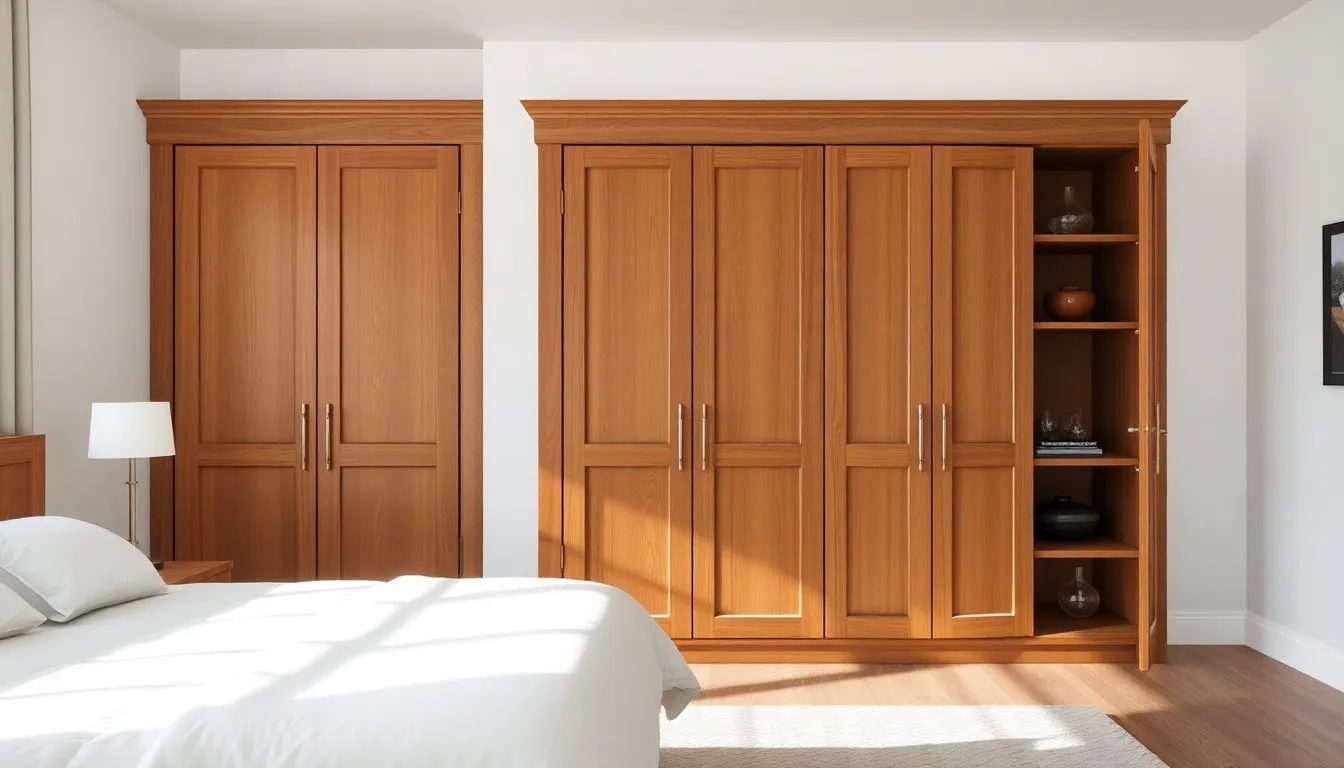
Wardrobes utilize a variety of materials in their construction, affecting durability, aesthetics, and functionality. Selecting the right material enhances the wardrobe’s overall appeal and performance.
Wood
Wood stands as a classic choice due to its natural beauty and strength. Various hardwoods, such as oak, maple, and cherry, exhibit excellent durability while providing a rich grain. Softwoods like pine offer a lighter aesthetic but may require additional care. Finishes can vary, from stains to paints, allowing customization for any interior. As an organic material, wood contributes warmth to a space, making it a popular option for traditional and modern designs alike.
Metal
Metal provides a sleek, contemporary design often sought in wardrobes. Stainless steel and aluminum resist rust, ensuring longevity in even challenging environments. These materials support minimalist styles and typically feature a clean, industrial look. Metal components often integrate seamlessly with glass or wood for hybrid designs. The strength of metal allows for larger structures without sacrificing stability, appealing to those needing substantial storage.
Melamine
Melamine combines durability and affordability, making it a common choice for modern wardrobes. This engineered material consists of particleboard or MDF coated with a melamine resin, offering resistance to scratches and moisture. Attractive finishes imitate the look of wood or offer solid colors, ensuring versatility in design. With a lightweight composition, melamine allows for easy transportation and installation. Its cost-effectiveness suits a range of budgets without compromising quality.
Wardrobe Styles And Designs
Wardrobes come in various styles and designs, each suited to different tastes and requirements. Understanding these options aids in making informed decisions.
Modern Wardrobes
Modern wardrobes feature sleek lines and innovative designs. Often constructed from materials like metal and glass, they offer a contemporary aesthetic. Many include functional elements such as built-in lighting and optimized storage solutions. Modular options allow customization to fit individual spaces perfectly. These wardrobes often emphasize simplicity, making them ideal for minimalist decor settings.
Traditional Wardrobes
Traditional wardrobes showcase classic craftsmanship and timeless designs. Typically made from solid wood, they offer durability and warmth. Such wardrobes often include intricate details like carved accents and ornate handles. Many feature ample storage with various compartments, ensuring everything has a place. These styles enhance a room’s overall ambience, reflecting elegance and sophistication.
Minimalist Wardrobes
Minimalist wardrobes prioritize simplicity and functionality. They often utilize functional designs with clean lines and neutral colors. Spaces maximize efficiency with smart storage solutions that avoid clutter. A minimalist wardrobe encourages an organized lifestyle while maintaining a sleek appearance. These wardrobes align with today’s trends, appealing to those who value both aesthetics and practicality.
Wardrobe Organization Tips
Effective wardrobe organization transforms cluttered spaces into streamlined areas. By following targeted strategies, individuals can enhance storage and simplify access to clothing and accessories.
Maximizing Space
Utilize vertical space to its fullest by installing shelves above hanging rods. Folded items can rest neatly on these shelves. Sliding doors eliminate the need for clearance, making them suitable for compact areas. Hooks on the inside of the doors provide extra hanging options for accessories. Trunks or stylish boxes also optimize under-bed storage for seasonal clothing. Creating zones for different types of clothing streamlines the morning routine. Grouping similar items enhances visibility, making outfit selection quicker and easier.
Accessories And Storage Solutions
Invest in organizers or bins specifically designed for items like shoes, belts, and ties. Adjustable dividers keep drawers neat by separating various accessories. Utilizing clear boxes allows for easy identification of stored items without rummaging. For handbags, wall-mounted hooks or shelves enhance both accessibility and aesthetics. Drawer organizers create additional compartments for smaller accessories, maintaining order. Personalized labels can clarify where each item belongs, further enhancing efficiency. This combination of solutions creates a functional and visually appealing wardrobe space.


